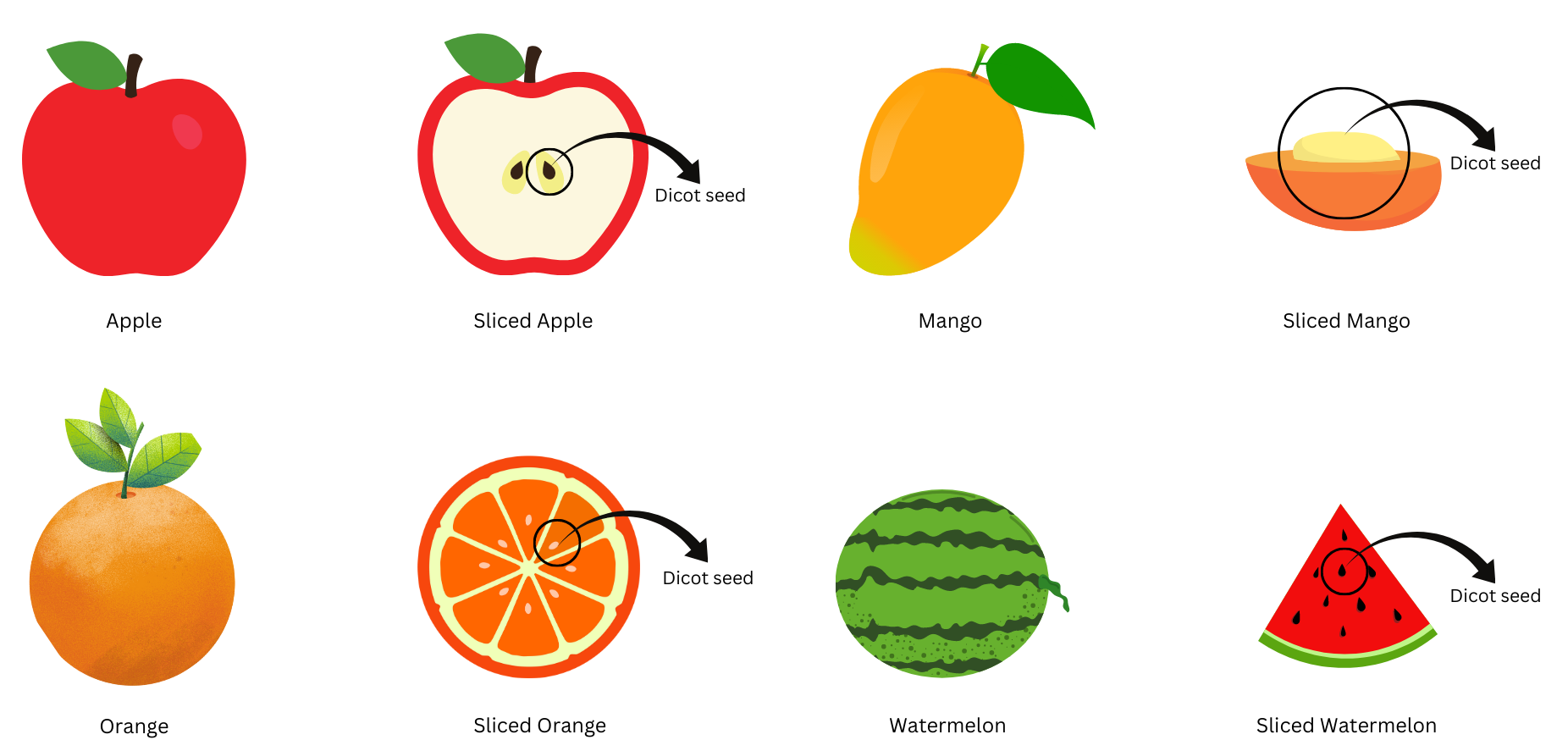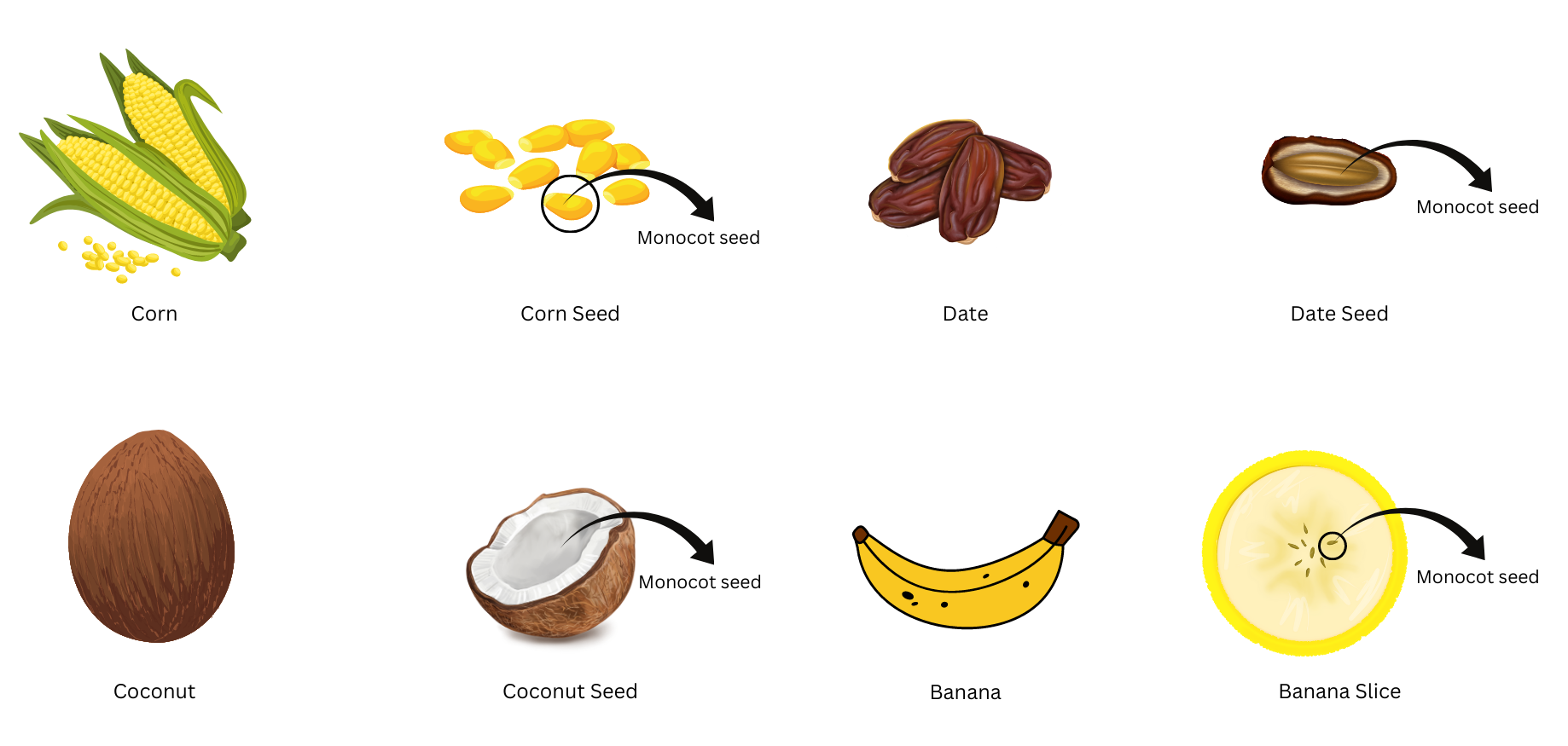2. Visit a fruit market and collect as many local fruits as possible. If many fruits are not available, you can collect tomatoes and cucumbers (these are fruits although we use them as vegetables). Make drawings of the different fruits. Split the fruits and examine the seeds within. Look for any special characteristics in the fruits and their seeds.
You visit a library also to learn about this.
Answer:
The fruits you collect will be fleshy or dry and have different number of seeds.
The seeds of a fruit will be monocotyledonous and dicotyledonous. A seed is monocotyledonous (or monocot) if it has a single embryonic leaf or cotyledon. A seed is dicotyledonous (or dicot) if it has two embryonic leaves or cotyledons.
Leaves of plants bearing fruits with monocot seeds show parallel venation and leaves of plants bearing fruits with dicot seeds show an irregular network-like venation called reticulate venation.
We collect the following fruits from the market: apple, mango, orange, watermelon, corn, date, coconut, banana.
The characteristics of the fruits along with their seeds are shown below:
| Fruits | Nature of Fruit | Number of Seeds | Type of Seed | Venation of Leaf |
| Apple | Fleshy | 5 – 8 | Dicot | Reticulate |
| Mango | Fleshy | 1 | Dicot | Reticulate |
| Orange | Fleshy | 10 | Dicot | Reticulate |
| Watermelon | Fleshy | 150 – 200 | Dicot | Reticulate |
| Corn | Dry | 800 | Monocot | Parallel |
| Date | Dry | 1 | Monocot | Parallel |
| Coconut | Dry | 1 | Monocot | Parallel |
| Banana | Fleshy | 3 – 15 | Monocot | Parallel |
The pictures of the dicot fruits along with their seeds are shown below:

The pictures of the monocot fruits along with their seeds are shown below:

We hope this helps you to get started on this activity! Make sure to add your own insights as well! Have fun!
“Visit a fruit market and collect as many local fruits as possible. If many fruits are not available, you can collect tomatoes and cucumbers (these are fruits although we use them as vegetables). Make drawings of the different fruits. Split the fruits and examine the seeds within. Look for any special characteristics in the fruits and their seeds.” – Solved.
Related Links:
Solution to Extended Learning Problem 1
Solution to Extended Learning Problem 2
Solution to Extended Learning Problem 3
Solution to Extended Learning Problem 4
Solution to Activity 8.1
Solution to Activity 8.2
Solution to Activity 8.3
Solution to Activity 8.4


